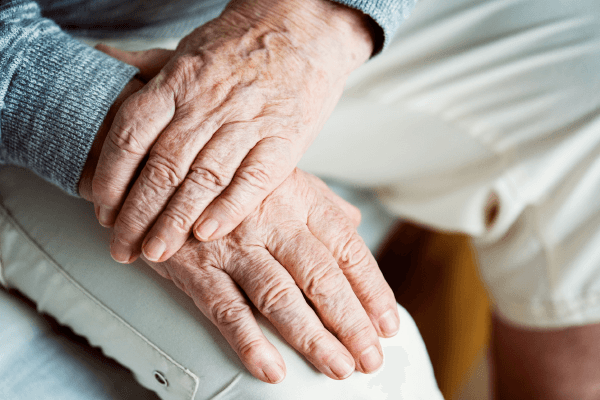Many seniors aim to remain in their homes for as long as possible so they can stay close to family and friends and enjoy the privacy and independence of living in their own property. It’s easy to understand why some may resist the idea of moving into an assisted living facility after having spent many years refining their dream home and making memories there. However, the lifelong family home may no longer be a safe place for someone who is losing mobility or dexterity as they age.
Homes can present a number of risks for seniors, from challenges navigating stairs and entering or exiting bathtubs to fire safety and scalding hazards in the kitchen. That’s why it’s so important to take steps to make a home safe for aging in place early, while those living on the property are still generally independent. Small changes can make life a lot easier for older adults.
Stair Safety
Many older adults struggle to make their way up and down stairs, either because of knee and hip-related issues or simply because they find it difficult to walk even on a flat surface. It’s a good idea to be proactive about stair safety as soon as a person develops even minor balance or mobility issues. These are some possible home modifications:
- Add railings to the stairs, and make sure they are securely fixed to the wall.
- Remove any carpet runners because these may be a tripping hazard.
- Add nonslip strips to hardwood stairs.
- Make sure the stairs are well-lit and clutter-free.
- If there’s a landing, add a small chair or bench for resting on.
These small precautions could help to make the stairs in the house much safer in the short term.
Longer-term, a stair lift may be necessary. These lifts can be fitted to the wall in most houses. There are designs suited for straight, single-flights of stairs and for curved staircases. Some designs feature large chairs with safety belts, making them a good option for those who use a wheelchair and may find transitioning between the chair and lift challenging.
Bathroom Safety
Slips and falls are a serious issue for adults. One in five falls leads to a severe injury, such as a head injury or broken bones. The bathroom is a common room for slips and falls due to the cramped nature of the room and the presence of wet or slippery surfaces. Also, many seniors struggle to get in and out of a standard bathtub or find showers difficult to navigate.
Some simple ways to make the bathroom safer include:
- Using bath mats with grips to prevent slipping when entering/leaving the tub
- Adding grab bars in showers and around the bathroom
- Making sure the shower door opens outward, or slides, rather than opening inward
- Replacing a standard tub with a walk-in tub
- Making sure any mats on the floor have a good grip and don’t pose a tripping hazard
Another important consideration is water temperature. The thermostat should be set appropriately so bath and shower water doesn’t get too hot to reduce the risk of scalding.
Seniors should not spend too long in the bath and be properly hydrated before bathing. This helps prevent fainting or dizziness when getting out of the bath.
Kitchen Safety
Several things in the kitchen could pose a risk to seniors, from large, overly heavy kettles and pans that a senior might struggle to lift to ranges and grills that could pose a fire hazard if left on too long.
Some seniors struggle with mobility and find they have to lean over or rest against things to perform basic tasks. This means they may accidentally turn a stove on while attempting to get something out of a cupboard above it. Some seniors are forgetful or prone to falling asleep during the day and may forget they’ve started cooking a meal.
Kitchen risks can be easily mitigated with some simple changes:
- Purchase smaller kettles and other appliances or accessories suitable for cooking for one.
- Use an induction cooktop rather than gas or electric to reduce fire risks.
- Use a smoke detector wired up to the oven to shut off the power in the event of a fire.
- Install carbon monoxide detectors and gas detectors, if applicable.
Ideally, any gas appliances would be replaced with electrical alternatives. However, if this isn’t possible, installing audible alarms for gas is a good idea. Gas supplies are treated to give gas a strong odor, but many seniors become less sensitive to this smell as they get older. Having audible and even visual warnings of a gas leak can save lives.
Garden, Yard and Garage Safety
Lawnmowers, hedge trimmers and even hoses and sprinklers are all common causes of injury at home. Many DIY or gardening enthusiasts experience injury by driving over, and hence cutting, the power cord of an electric lawnmower or by attempting to use an appliance too large or powerful for them.
Operating gas-powered equipment in a poorly ventilated space or using a power tool that’s damaged or poorly maintained can be a serious risk. A senior may do this without thinking or because they’re unwilling to ask for help with their yard work.
Another common risk area is the garage. Years of accumulated clutter in a cramped space with hard floors creates significant risk of injury by falling or from loose shelving or piled-up boxes toppling over.
Taking the time to declutter and throw out worn or damaged tools is a good way of accident-proofing these spaces. Tools should have appropriate safety features such as auto shutoffs and blade guards to protect those who use them.
General Safety Improvements
In addition to making improvements to specific areas of the house that are often accident hot spots, it’s a good idea to make some general safety improvements. Young adults may be quite comfortable in a house with furniture sticking out of tight corners or objects lying around, but older adults with poor balance or eyesight may need a more carefully laid out environment.
Smart Lighting
Smart lighting can help seniors reduce their energy usage and also make it easier for them to navigate their home. Some seniors may struggle to see in low light conditions and find it hard to locate light switches to turn them on and off.
Smart lighting can help seniors feel safe in their homes. The lights work by detecting motion, so if a senior gets up in the middle of the night to use the bathroom, the lights turn on automatically and then switch off after a set time. Some smart lights do double duty, interacting with fall detection systems and triggering a call to an emergency contact center in the event of a fall.
Medical Alert Systems
Medical alert systems can provide seniors with peace of mind by allowing them to call for aid if they feel unwell, fall or become confused. These systems range from simple wall-mounted buttons or wearable pendants, which are pressed to call for help, to more sophisticated devices with fall detection features.
Some medical alert system manufacturers offer smart watch-style devices that may be appreciated by tech-savvy seniors who want something a little more functional and fashionable. Those who take pride in being independent and self-sufficient may be more willing to wear a smartwatch than a pendant.
It’s worth researching the various medical alert system companies before subscribing to one. Some offer daily or weekly check-ins, basic telephone operator services to connect seniors with other loved ones, and prescription renewals and basic medical advice via their helplines, meaning seniors can call them about simple concerns such as confusion over a medication dose or worries about a minor ailment. Others provide more limited helpline services.
In addition, some companies such as Medical Guardian have caregiver monitoring apps that allow loved ones to check up on their older relatives. The device owner has the option of permitting loved ones to receive important notifications, ensuring the right people are contacted in the event of an emergency.
Removing Tripping Hazards
This is something that has been touched on in other areas of this guide, but it applies just as much to the living room as the bathroom or the stairs. Loose rugs, turned-up carpets, trailing wires and low obstacles can be very dangerous for seniors.
If an older adult has already fallen once, they are at increased risk of falling again, and it’s important to take precautions to reduce the risk of a second fall and potentially serious injury.
Often, before a person has their first fall, they show signs of difficulty walking, for example, by shuffling instead of taking full steps. This is a useful early warning sign to look out for and a clear indication that it’s a good idea to tidy open areas and remove tripping hazards in the house.
Wheelchair-Friendly Spaces
Often when a senior requires a walker or a wheelchair, some families think they should move out of their home and into an assisted living facility, but this isn’t always necessary. While assisted living facilities are a good compromise for seniors who require more support with the activities of daily living, some seniors can age in place quite successfully with home modifications such as installing lower sinks and counters, rearranging the furniture to accommodate a wheelchair or walker and fitting ramps on certain stair areas.
It’s worth discussing these changes with a senior who is finding their current living arrangements difficult to manage and trying to accommodate their preferences.

